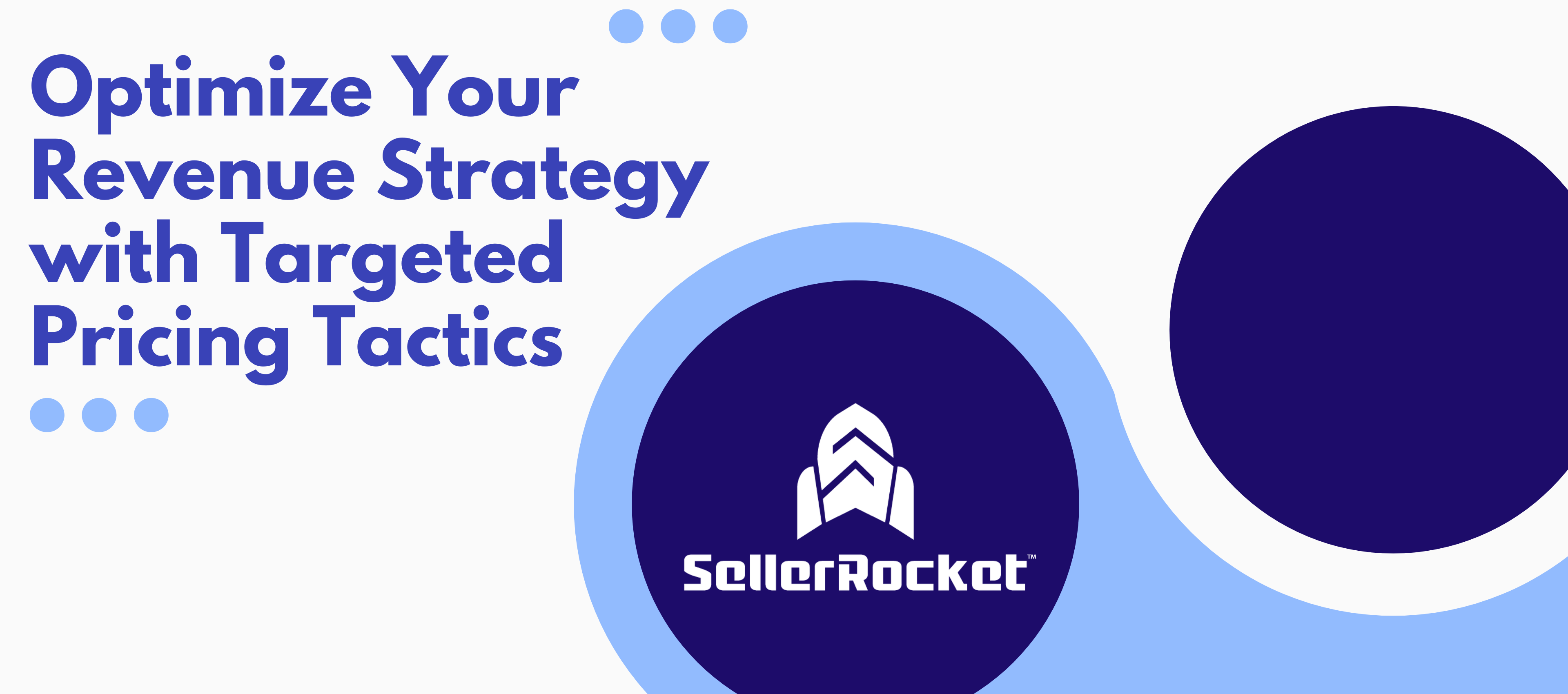
In the fast-paced world of eCommerce, particularly on Amazon, pricing is a powerful lever that can significantly influence your sales performance and revenue. Finding the optimal price for your products, however, can be a complex task due to constant market shifts, competitive forces, and varying customer expectations. While the convenience of selling on Amazon is undeniable, it comes with the challenge of choosing the right pricing approach that balances profitability with market competitiveness.
This article delves into strategic pricing techniques that can elevate your Amazon business and help you optimize revenue. Read on to discover actionable tips and tools to refine your pricing strategy.
Contents
Pricing plays a central role in determining your product’s success on Amazon. In fact, how you price your product directly impacts your visibility, customer interest, and sales volume. With millions of products listed on Amazon, shoppers often rely on price as a key factor when making purchasing decisions. In addition to competitiveness, pricing affects your chances of winning the Amazon Buy Box—the coveted spot that increases visibility and sales potential. A well-thought-out pricing strategy can give your product the edge it needs to stand out among a sea of similar listings.
Before you decide on a price for your product, consider these fundamental factors: Understanding your competition is essential. Research the prices of similar products and adjust your pricing accordingly to remain competitive without sacrificing your profit margins. Make sure your prices cover all costs, including production, shipping, Amazon fees, and any additional charges. Establish your minimum price threshold to ensure profitability. Finally, pay attention to how customers are reacting to your pricing. Are your prices too high compared to competitors? Are you getting enough attention on your product detail page? Customer feedback, ratings, and reviews can give you valuable insights into your pricing strategy.
Once you’ve gathered data on costs, competition, and customer behavior, it’s time to explore pricing strategies that can give you a competitive edge.
Dynamic Pricing: Adjusting to Market Conditions
One of the most effective ways to stay competitive on Amazon is through dynamic pricing. This involves regularly adjusting the price of your product based on market conditions, supply and demand, and competitor pricing. Dynamic pricing allows you to stay agile in an ever-changing market and capture new buyers when demand spikes or competitors adjust their prices. Advanced tools like automated pricing software can help you track market changes in real-time and adjust prices to remain competitive, ensuring you’re always priced optimally.
Psychological Pricing: Creating Perceived Value
Sometimes, pricing isn’t just about numbers; it’s about perception. Using psychological pricing tactics like setting prices just below whole numbers (e.g., $19.99 instead of $20) can trigger customers to perceive the product as more affordable. Offering tiered pricing or premium options can also create a sense of value differentiation, encouraging customers to choose higher-priced items for perceived better quality or added features.
Competitor-Based Pricing: Keeping Pace with the Competition
If you’re not sure how to price your products, one approach is competitor-based pricing. This involves adjusting your price to match or slightly undercut your competition while ensuring that your offering stands out in terms of quality, features, or customer service. This strategy is particularly effective for sellers in highly competitive niches where pricing is the primary differentiator. However, simply matching competitors’ prices without adding any distinguishing factors won’t necessarily win you customers. Consider adding unique selling points such as bundling, faster shipping, or value-added services to distinguish yourself from other sellers.
Price Skimming and Penetration Pricing
Depending on your product and market, you might consider using price skimming or penetration pricing strategies. Price skimming involves setting a high initial price for new or innovative products and gradually lowering it as competition increases or as the product matures in the market. This strategy is effective for products with unique value propositions or strong brand recognition. Conversely, penetration pricing involves initially setting a lower price to attract customers and establish a foothold in the market. Once you’ve built customer loyalty and generated sales, you can increase prices over time.
Pricing on Amazon doesn’t have to be a manual, time-consuming process. There are various tools available to help you optimize your pricing strategy. Automated pricing tools, like Amazon’s own pricing solutions, can automatically adjust your prices based on predefined rules, ensuring you stay competitive. Third-party software can also provide deeper insights, leveraging algorithms to suggest the optimal price based on factors like competitor pricing, customer demand, and historical sales data.
In conclusion, selecting the right pricing strategy for your Amazon business is essential for maximizing revenue and staying competitive in a crowded marketplace. Whether you choose dynamic pricing, psychological pricing, or competitor-based strategies, understanding your costs, market conditions, and customer preferences is key to setting the right price. By leveraging pricing tools and remaining adaptable to market changes, you can optimize your revenue strategy and successfully grow your Amazon business.
© 2025 SellerRocket TM . All Rights Reserved.
Get our latest updates directly to your inbox.
Only the best in eCommerce and affiliate news, tips and tricks.
